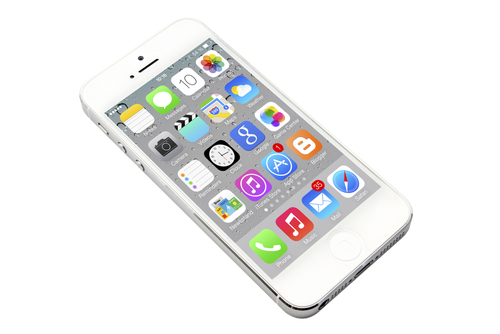May 20th, 2014

One major challenge businesses face in maintaining effective security is the trend of employees using their own devices for work. ‘Bring your own device’, or BYOD, refers to employees using any of their personal devices on your network. At the very least, your employees are likely using their smartphones. There are a number of reasons why this complicates things from an IT standpoint, but at IS Decisions, Francois Amigorena explains some ways to improve security in a BYOD environment.
A vital move to securing your network while employees are using multiple devices to access it is to prevent concurrent logins. Each employee is given specific credentials and are unable to log in with those credentials if they’re being used on another device. This potentially creates some issues with employees being logged in on their desktop and being unable to gain access remotely, but it also prevents lost or stolen device from being able to access the network freely.
In conjunction with login limitations, it’s important to implement time limits for employees’ active sessions. After a set time, the device would automatically prompt users to log in again using their credentials. This protects against the possibility of a logged in device being compromised.
Regardless of the device they’re using to access your network, most employees don’t need access to everything available on the network. It takes meticulous planning, but limiting what files and applications each user is able to access greatly increases security by reducing the potential for complete disaster. Even if a third party gains access through a lost device, they won’t be able to control your entire network.
If employees are regularly using your network with multiple devices, it’s important to keep a running log of those devices. This way, if an employees access requirements change, you can quickly change their permissions for all applicable devices. Likewise, should an employee leave the company, you can quickly end access for their devices to keep them from taking valuable data with them.
It’s important to always closely monitor the activity on your network, but this becomes more important when users are potentially bringing in threats on their own devices. Log in attempts from unrecognized devices, or log ins at odd hours, or sessions moving large amounts of data should all trigger flags. This will allow you to minimize damage.
BYOD is only one challenge that business owners face every day regarding their network’s security.
If you need help improving security at your company, call Geek Rescue at 918-369-4335.
May 19th, 2014

It’s a well-known concern that Android users are much more at risk for malware infections than iOS users. Just a month ago, a fake antivirus app made the rounds in the official Google Play store and victimized a number of users. Google has since offered refunds to those who mistakenly downloaded the malicious app, but it seems they haven’t sufficiently protected against a similar threat reappearing. Lucian Constantin reports at Network World that the Google Play store and the app store for Windows Phones have both recently had malware hidden behind recognizable brand names identified in their stores.
It’s a fairly recent development, but it seems criminal developers are launching malicious apps with well-known company names to further confuse users. This is a well-known tactic of email scams and phishing websites.
One developer account launched malicous apps under the names Avira Antivirus, Mozilla Firefox, Google Chrome, Opera Mobile, Internet Explorer and Safari. The same developer also has a Kaspersky Mobile antivirus app complete with the company’s logo. When downloaded, the app will even simulate a scan of the device’s files.
Making these fake apps more believable, and more costly to users, is that they aren’t free. The Kaspersky Mobile app costs about $4. Most users instinctively trust paid apps more than free ones. A number of free apps have been reported to be malicious, but there’s an implied value tied to something that costs money. It’s also much more believable to pay money for a high quality, big name security app than to get it for nothing.
Some of these apps have been downloaded more than 10-thousand times and even made it onto the “Top Paid” apps list that helps them be further distributed.
Because there has been no sufficient changes made to the Android and Windows Phone app stores, it’s likely that these fake apps will continue to pop-up. However, since many of them steal the exact name of legitimate apps from recognized industry leaders, there’s also likely to be more pressure put on both Google and Microsoft to enhance security.
If you’ve mistakenly downloaded a malicious app, or are having any other kind of trouble with one of your devices, call Geek Rescue at 918-369-4335.
May 6th, 2014

Once your computer is infected with malware, it can be a long, complicated process to remove it. An infected system is at risk for data loss and risks spreading the malware to other computers. The best security is to keep the infection from ever happening. To do that, you need to know where malware infections typically stem from. At Business New Daily, Sara Angeles lists the most common tactics taken by malware to infect users.
A decade ago, pop-up ads were common online and were a common way of spreading spyware and other malware. The use of pop-ups has significantly decreased over the years and online advertising has become much more legitimate. However, there are still plenty of malicious online advertisements that have the singular goal of infecting users. Sometimes referred to as malvertisements, online ads exist that are capable of infecting users without even a click. The display of these ads can be enough to install malware on your machine. Usually, these ads are found on less than reputable websites, but through an intelligent attack, they’ve been known to plant themselves on trusted sites from time to time.
The traits that make social media so popular are also the primary reasons why it’s often the route of attackers. Messages received on social media are trusted because they appear to be from a friend or recognized contact. There’s also the sheer number of users. An attacker has a better chance of seeing his malware spread to thousands or millions of users on social media than through other avenues. Facebook messages and Twitter DMs are common ways to spread malware, but there are also malicious Twitter accounts that tweet out spam and malicious website links.
Smartphones enjoyed a short period of safety from malware, but as the mobile audience has grown, so has the amount of malware targeting it. Android users are at a much higher risk of malware due to the operating systems open source nature, but iPhone users have seen their share of security scares also. Malicious apps that are either downloaded from a third party or infiltrate the official app store are usually to blame for a mobile malware infection. Malware can also be spread to mobile devices through text messages, emails or through infected websites.
Regardless of the number and effectiveness of security tools you have in place, an unsuspecting and uneducated user is likely to encounter plenty of malware. Even those that know not to click suspicious looking links or download apps from outside the official app store can be duped. Malware developers use social engineering to manipulate users and make links irresistible. They play off of current news stories and promise deals that are too good to be true. If it didn’t work, they’d stop doing it, but there’s no end to these tactics in sight.
Much like social media, nearly every internet user also has an email account. Malware is commonly spread as an attachment to spam messages that claim to be from a trusted business, website or government agency. Users who download these attachments have their computer infected with malware, and often end up spamming their entire address book with malware and malicious links. This is another problem as other users receive messages that appear to be from a friend and instinctively trust the contents.
Malware is becoming more intelligent. Recent attacks have been able to hide themselves from security tools or encrypt a user’s files.
If your device is infected with malware, bring it to Geek Rescue or call us at 918-369-4335.
April 22nd, 2014

At the end of March, HTC released their latest flagship smartphone, the HTC One M8. Leading up to the release and in the weeks since, the device has earned rave reviews for a number of innovative features and high quality specs. But, it’s not perfect, as no smartphone could be. At CIO, Al Sacco explained his biggest beefs with HTC’s offering.
The first feature that sticks out about the One M8 is that it uses dual lenses on its rear-facing camera. HTC calls it “UltraPixel” technology. The two lenses are expected to accurately calculate the distance of subjects in order to yield better images. In reality, bright light environments result in washed out colors. Combined with the lower than expected 4 MP, the One M8’s camera is a definite disappointment.
The One M8 comes with a bundle of software that gives the device a number of features that sound great on paper. In practice, many users find them cumbersome, annoying or useless. HTC Sense features include gesture based commands and a home screen panel designed to deliver interesting information. In most cases, these features feel gimmicky and actually inhibit users from accomplishing their tasks.
The fact that the One M8 features memory card support is noteworthy. With a capacity for microSD cards up to 128GB, users are able to add plenty of space for nearly any application. The execution of this memory card support is lacking, however. Specifically, the only way to open the slot to add or remove a memory card is with a small tool that comes with the phone. This is limiting for a mobile device that might not stay close to the tool at all times. It’s also extremely easy to lose or misplace the tool, which means you’ll be left prying open the memory card slot with a paper clip.
This final complaint isn’t about the actual smartphone at all. Instead, it focuses on the highly publicized Dot View case, which has appeared in most of the advertising for the One M8. Some readers will immediately see the case’s display as similar to a Light Bright. There are small holes that display lights of different colors to allow users to check the time, get notifications and even answer phone calls without opening the case and turning on the screen. Again, on paper this sounds great. The problem is how cheap the case feels. At a retail price of $45, that’s unacceptable. It’s also awkward to use and keep open when you actually want to use your phone. Since it doesn’t do anything revolutionary, considering most smartphones display similar information on their lock screen, this case certainly isn’t a reason to purchase the device.
These flaws don’t necessarily mean that the HTC One M8 is not right for some users. No smartphone is perfect, but it’s best to understand the positives and negatives before hitching yourself to your next phone.
Regardless of the make and model of your smartphone, Geek Rescue is here to fix it when it breaks. When you have issues with any of your devices, come by or call us at 918-369-4335.
April 16th, 2014

Users of Android smartphones are already at a significantly higher risk of malware infection than their iPhone counterparts. Experts, however, are warning of even more threats coming throughout 2014. One of those threats has already been identified and has infected millions of devices. Chris Smith of BGR reports on the Android malware threat called ‘Oldboot’ that is also being referred to as “the biggest threat to the operating system to date”.
Oldboot is capable of installing malicious apps on a device and can even remain hidden from detection or “fight” antivirus apps by modifying or uninstalling them. But, what makes it so dangerous is Oldboot’s ability to re-infect devices even after seemingly being removed. This malware is stored in the memory of devices and alters booting files. Infected devices then re-install malware in the early stages of their restarting process.
Oldboot is referred to as advanced malware because it has so many capabilities. It’s able to send text messages from a user’s device, modify the browser’s homepage, launch phishing attacks and more.
Perhaps the biggest problem is very little is known to date about what specific Android devices are at risk or even how devices are infected. Most Android malware infects devices through malicious apps. Occasionally, these malicious apps find their way into the official Google Play app store, but more often they’re downloaded from an untrusted source.
Other dangers include malicious text messages and emails and malicious websites visited on your smartphone.
If you think your device has been infected by any form of malware, bring it to Geek Rescue or give us a call at 918-369-4335.
April 16th, 2014

It’s no secret that malware is an ever-present threat to internet users. It’s also no secret that while defenses against malware are steadily improving, the number of malware being produced and its capabilities are growing. A recent study released by security firm Panda Labs confirmed the growing threat of malware, as Tony Bradley reports for PC World.
In their 2013 security report, Panda Labs found that about a fifth of the malware that exists was created last year. That speaks to the rapid growth of malware production. In 2013 alone, 30-million new threats were created, which breaks down to about 82-thousand per day.
Of these newly minted threats, about 70-percent are trojans, which are particularly troubling forms of malware capable of mining data and even controlling an infected computer while staying hidden from users and security tools. Total, Panda Labs discovered more than 20-million trojans. The rest of the malware was made up of a combination of worms, viruses and adware or spyware. Trojans were also responsible for the most successful infections and accounted for almost 80-percent of infections in 2013.
In terms of application vulnerabilities, Java was to blame for the most attacks. Exploits on a security flaw in Java led to successful attacks on Twitter, Facebook, Apple and Microsoft.
With so many forms of malware around, it’s amazing users aren’t victimized more often. Most users aren’t infected by malware often, but even becoming the victim of malware once each month would mean you avoided all but .0001 of all new threats. Given these statistics, it’s clear why experts warn that there’s no such thing as perfect security.
Panda Labs also agreed with the consensus that in the mobile world, Android is the most popular target for malware producers. They also sent a warning to users that more targeted attacks aimed at stealing data would be coming this year.
Users who are unprotected by security tools like antivirus programs run a significantly higher risk of becoming the victim of an attack. This could lead to the harm of your computer and the theft of your data.
For help securing your computer or recovering from an attack, call Geek Rescue at 918-369-4335.
April 14th, 2014

Last week, news of the Heartbleed bug, which threatens the integrity of HTTPS enabled websites worldwide, broke. In addition to a worry that important data sent between users and websites could be compromised and stolen, there is also a concern that mobile services could be vulnerable. Stephanie Mlot at PC Mag explains how Heartbleed threatens the security of Android users specifically.
Naturally, Google was among the most potentially costly sites should users fall victim to Heartbleed. Not only are Google’s services among the most used online, but they also have access to a lot of personal information that is extremely valuable to criminals. So, Google set out early to patch their services and protect their users.
So far, Google services Search, Gmail, YouTube, Wallet, Play, Apps, AdWords, Maps and Earth have all been patched.
For the Android crowd, every version of the mobile operating system is safe from Heartbleed save for Android 4.1.1. It’s unknown exactly how many users have this version installed on their devices, but some iteration of Android 4.1 is being used by more than a third of Android users. It’s estimated that the number of affected users is in the millions and devices affected include popular manufacturers Samsung and HTC.
A Google spokesperson stated that patching information is being distributed to manufacturers, but this slow process is one of the main issues regarding Android security. Unlike Apple, which can push updates and patches to all of its users directly, Android users must wait for each manufacturer to tailor patches to their specific environment. In cases like this one, that can leave users and data vulnerable to known exploits for days and even weeks.
Blackberry has released a statement informing users that a fix for their Android devices will be made available by the end of the week. Other manufacturers have been quiet, however.
The best option for users in the meantime is to assume that data can be stolen from their device. If your Android device uses the 4.1.1 operating system, which can be checked in the Settings menu under ‘About Phone’, don’t use your device to log-in to online accounts or to message personal information.
While users will have to wait for an official patch to protect themselves from Heartbleed, for any other problems with your Android device or other mobile devices, come by Geek Rescue or call us at 918-369-4335.
April 3rd, 2014

The “Find My iPhone” feature is a valuable security tool and the last hope for users who have had their smartphone stolen or have lost it. Previously, reports surfaced pointing to vulnerabilities in Apple’s “Lost Mode”, which allows users of iPhones, iPods and Macs to lock their device remotely. As Ashley Feinberg reports for Gizmodo, a security flaw has also been found in “Find My iPhone”, which allows strangers to completely unlock a stolen device.
“Find My iPhone” allows users to log in to their iTunes account and find the location of their smartphone as long as the device is still turned on. Not only does this help users recover lost phones, but it also ensures that criminals can’t steal and sell iPhones. As long as the original user’s iCloud account information is still on the device, it can be tracked down.
Erasing the iCloud account requires an Apple ID password. While breaking that password is possible, it would usually require a minimum of a few hours to do so, which would provide the rightful owner plenty of time to find their missing device.
A video recently posted to YouTube, however, demonstrates how criminals can by-pass the need for a user’s Apple ID password and delete their iCloud account. Doing so doesn’t even require a great deal of technical expertise. All that’s needed is for the “Delete Account” button to be pressed at the same time as the “Find My iPhone” switch from the iCloud settings menu. That brings up the password prompt and the delete window at the same time, which freezes the device.
From there, after restarting the device, you’ll find that you’re able to delete the iCloud account without a password and have free reign.
While no fix for this issue exists yet, Apple has likely been working on one since this exploit was made public. Users who have a PIN in place to lock their iPhone are already partially protected from this bug. Even if their device is stolen, the PIN has to be broken before anyone would even have access to this exploit.
While Geek Rescue can’t find your missing smartphone, we do fix it when it breaks. For any issues with your device, call us at 918-369-4335.
March 25th, 2014

Last year, HTC introduced the One as its flagship smartphone. Even with critical acclaim, the device wasn’t as big a hit as the company hoped. This year, HTC will try again with the release of the One M8. Brian Bennett of CNet reports on the specs and features that could make the HTC One M8 your next smartphone.
The first thing you’ll notice about the M8 is the solid body completely constructed from aluminum. The sealed chassis isn’t waterproof and it prevents users from removing the battery, but it also makes the device feel solid and definitely not cheap. The screen is a full 5-inches across, which is a slight upgrade over even the original One’s screen. There are dual, front-facing speakers branded by HTC as BoomSound. They’re regarded as capable of producing some of the best sound available from a mobile device. You’ll also find a state of the art 2.3 GHz quad-core Snapdragon processor and 2 GB of RAM. Most notably lacking from the M8 is a fingerprint scanner. Certainly not mandatory, but a little surprising considering Apple and Samsung have begun including them in their top of the line phones.
The display on the huge screen is an IPS LCD with full HD resolution. The pixel density is actually a little lower than the original One because of the slight increase in screen size. The most recent Samsung devices offer more vibrant colors and truer blacks, but the M8’s display is regarded as more than adequate.
Perhaps the biggest difference between the One and the M8 is the improvement in the camera. The M8 features dual lenses and a dual-LED flash. Both lenses are located on the back of the phone and while the larger of the two tackles the heavy lifting of picture taking, the smaller is for depth perception. This allows for users to re-focus images after they’ve been captured. While this is a neat trick, unfortunately the images captured with the M8’s camera are a little underwhelming. There’s no sharp focus or vibrant color, which means images appear soft. Varied lighting conditions are also a problem.
With it’s brand new processor, the M8 was able to break records in benchmark testing. There’s no lag with this device in everyday functions, which includes photo editing. Call quality didn’t wow as much as the processing speeds, but didn’t disappoint either. With its large, 2600mAh battery, the M8 also enjoyed nearly ten hours of use during CNet’s battery testing.
The M8 runs the latest Android operating system, version 4.4.2. It’s scheduled to be released today at a launch party and made available at stores soon.
Whether you’ve bought the latest smartphone or still have an older model, Geek Rescue fixes whatever goes wrong. For malware infections, broken hardware and more, call us at 918-369-4335.
March 24th, 2014

Regardless of what mobile operating system you use, there’s bound to be some security flaws. The latest issue is a way for malicious apps on Android devices to receive elevated privileges without a user’s knowledge. Adrian Kingsley-Hughes of ZDNet reports on these so-called “Pileup flaws”.
Pileup is short for privilege escalation through updating, which adequately describes this type of attack.
Each time an update for a device’s current operating system is installed, which can be as often as every few months, a user is at risk. Updates require thousands of files to either be replaced or added to a device. This includes carefully adding new apps without damaging or changing any existing apps. This method creates a vulnerability.
If an existing app is malicious in nature, it’s developer can request additional permissions that are only available in an updated operating system. Those permissions won’t affect users before they update and an app may seem legitimate. Once the user updates, however, those permissions are automatically granted with no warning or verification required from the user.
This way, an app can lay dormant until the user updates, then take control of a device. With expanded privileges, malicious apps can control text messages, download malware and monitor activity.
In a similar attack, malicious apps with the same name as a trusted system app can be upgraded to a system app during an update. This gives malicious third party apps the power to access nearly everything on a device and control functions.
Researchers claim to have found six examples of Pileup vulnerabilities in Android devices, which puts about a billion total devices at risk. Google has been alerted about these vulnerabilities and has already begun patching them.
Discoveries like this reinforce how important it is to exercise caution when downloading apps. Only download from the official app store and, even then, be cautious about what you decide to add to your device.
If your device has been infected with malware or you’re having other issues, bring it to Geek Rescue or call us at 918-369-4335.




















